
News, Insights, and more on Industrial IoT
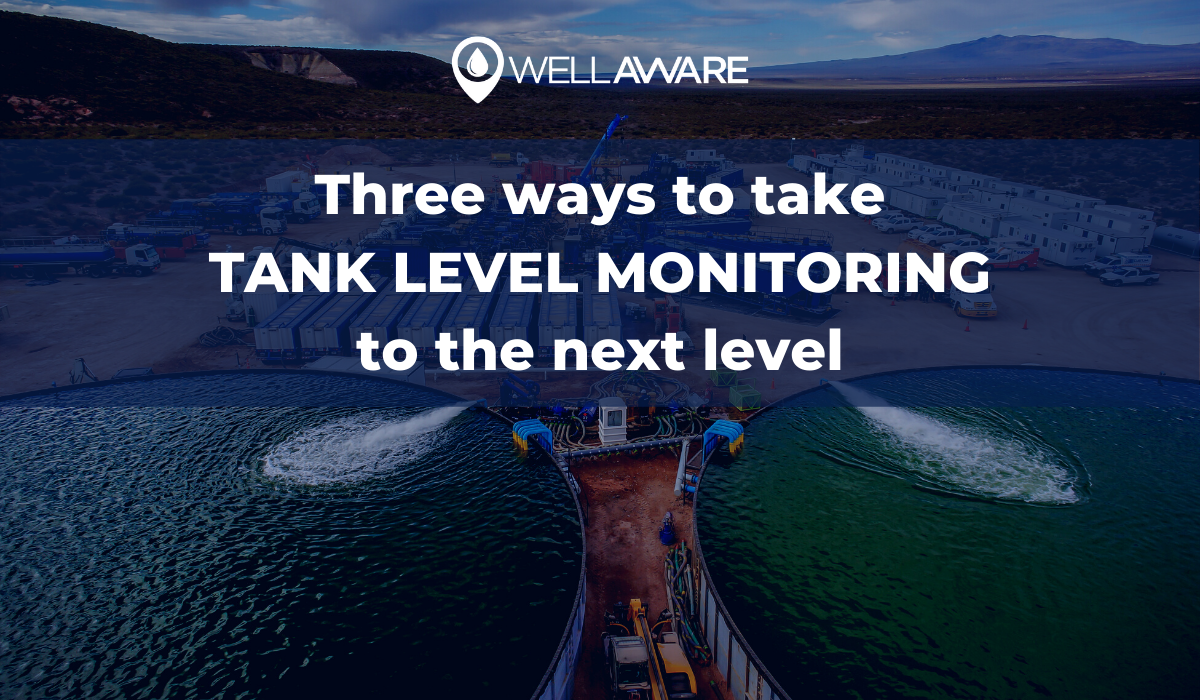
In our last blog post, we discussed how remote tank level monitoring (TLM) helps us solve major industrial challenges (TL;DR: you can avoid MANY issues with accurate, reliable tank data).
Here, we explore three ways you can take your tank level monitoring solution to the next level by expanding your remote monitoring and automation capabilities.
We’ll touch on:
We’ve got a lot of ground to cover, so let’s jump in.
Together, level, flow, pressure, and temperature monitoring are often referred to as “process instrumentation.” Having a tank level monitoring system that can integrate these processes will allow you to monitor more of the critical liquids processes that your tank level monitoring systems support.
Industrial tanks and smart tank sensors are sufficient when we’re only storing liquids. But, once things start moving, we might need more. This is where flow monitoring comes into play.
Through flow monitoring, we can track instantaneous flow rates of liquids moving in and out of tanks. Flow meters are useful because they help us calculate how much liquid is passing and has passed through our tanks, which is important for custody transfers and other common processes.
To implement flow monitoring, you need a flow sensor, flow transmitter, and a platform to visualize your flow data.
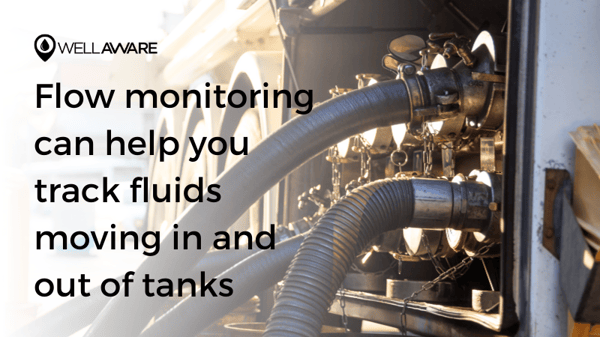
The specific flow sensor you need will depend on the type of liquid you are monitoring and the available process connections. We see operators use all kinds of flow sensors, from turbines and mag meters to coriolis mass meters and ultrasonic sensors.
You need a flow transmitter to convert meter data into a standard you can use down the line. Some flow sensors come pre-equipped with a transmitter, but if you have to purchase an external transmitter, make sure you do your homework first. Check to see if the transmitter is compatible with your sensor and that you can actually connect it to your monitoring infrastructure!
Lastly, you need a software platform to integrate and visualize the flow data you collect. This is where selecting a great tank level monitoring platform can pay dividends. While some tank level monitoring software is designed just for tanks, others offer expandable applications to let you include flow data, and more.
By adding flow meter data to your workflow, you can do some powerful stuff with your liquids infrastructure. For example, you can more precisely predict when tanks will fill or empty, set up alerts around transfers and deliveries, and calculate how fast liquid moves across your facilities. Put simply, having a tank monitoring solution that can do more than monitor your tanks is really helpful.
Pressure monitoring can be just as important as monitoring flow. Pressure readings are often valuable diagnostic indicators of efficiency and safety for pipelines and tanks, especially when high pressures are present.
The instrumentation involved in monitoring pressure is similar to what you need for monitoring flow. First, you need a pressure sensor that monitors pressures within a specific range, and you'll need a pressure transmitter and a software platform. Keep in mind that the wider the range, the less precise your readings will be - so get a sensor that is sized to your maximum allowable system pressure.
With pressure sensors, you'll need to make sure the sensor diaphragm material is compatible with your fluids. On top of that, you need relevant certifications -- hazardous area certs, safety certs, etc. -- for all industrial sensors and transmitters, including pressure.
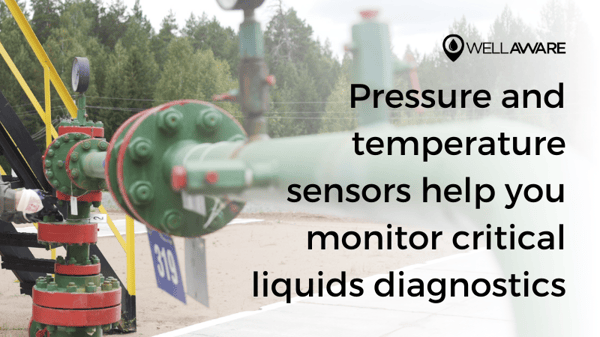
Like pressure, temperature is another useful diagnostic indicator in many industries. For example, temperature readings can help ensure food and beverage manufacturing processes are working normally, and they can also prevent hydrates from forming on critical process infrastructure. And again, all you need is a sensor, transmitter, and visualization platform.
Operators primarily use RTDs, thermocouples, and thermistors for their sensors. Depending on the process, you might need a thermowell to protect your sensor and simplify ongoing maintenance. To top it all off, you need a robust visualization platform that can marry your temperature data with tank level data and open the door to powerful automation opportunities.
Pro tip: WellAware tank level monitoring devices come pre-configured with expanded I/O capabilities that enable you to connect different types of sensors, wired and wireless, including flow, pressure, and temperature sensors. The best part? You can upgrade your TLM device without having to make additional investments in IoT hardware.
Wherever you see a liquid storage tank, you can bet there is a pump around as well. With gravity feed operations as a rare exception, tank level monitoring and pump control go hand in hand.
Controlling pumps connected to tank systems can automate critical tasks, like transfers and chemical injection, that prevent disasters like spills and keep critical processes on target.
Naturally, you need some kind of a pump controller to control pumps. The type of controller you need depends on the type of pump you have and what you want to accomplish. Pump controllers vary widely in terms of their complexity, precision, and price.
In their simplest form, pump controllers are just timers connected to relays. They turn single-speed pumps on and off based on time parameters. On the more advanced end, pump controllers can use embedded compute and enable some really cool stuff.
Operators control pumps in two ways: 1) remotely through a web or mobile interface and 2) with automation logic. The second path is where the magic happens.
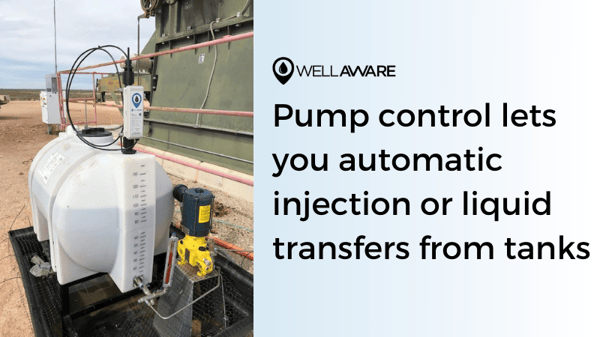
If pumps are connected to tank monitoring data through the same software/cloud application, operators can use internet protocols, like APIs or SCADA interfaces, to set complex automation rules and manage pumps remotely. This means that we can not only automate when pumps come on and off based on tank levels, we can also manage the automation rules in a single interface.
One way to take automation a step further is to incorporate machine learning or advanced analytics. In the next section, we’ll go deeper into the benefits of incorporating machine learning and analytics into your tank monitoring solution.
AI/ML is the path to the highest level of tank level monitoring. By using sophisticated algorithms that learn from our operations, we can start to deliver real business value and make truly intelligent decisions. However, keep in mind that machine learning is only as good as the data that feeds your algorithms! Unreliable tank data can lead to catastrophic results, so don't go down this path unless you trust your tank level monitoring system.
When tanks leak, bad things happen. Leaks can put employee health and safety at risk, contaminate fragile environments, shrink inventories, and drain resources. As a result, detecting leaks ASAP is critical. Unfortunately, this is MUCH easier said than done.
The tricky thing is that we want to be notified only when liquid infrastructure is leaking, not when things are fine. False positives can lead your team astray and cause you to put processes in motion that are equally harmful to your bottom line.
To mitigate false positives, you need intelligent algorithms that can identify leaks accurately, even when flow rates are inconsistent. Sophisticated machine learning algorithms allow you to take precise sensor data and parse out real leaks from false positives.
Going back to what we discussed earlier, this is why leveling up with pressure or flow monitoring is important. You can enhance your organization’s leak detection capabilities dramatically.
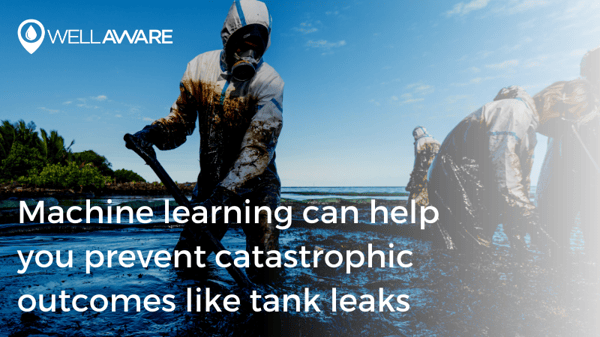
Regardless of which industries use tank level monitoring, when liquids enter or leave tanks, we often have some inventory transfer or financial transaction to record. Delivering chemicals into oilfield service tanks, hauling crude oil from production tanks, or moving food products from mixing tanks to transportation packaging are all examples of events where automatic transfer detection is helpful.
In these situations, we need to know exactly how much liquid is loaded into or pulled from tanks. A well-designed tank level monitoring system can accurately timestamp and measure inventory transfers while accounting for sensor noise or anomalies that might look like transfers, but aren't.
Real-time usage approximation is easy for flow meters. However, flow meters tend to be expensive -- often 5-20x the cost of tank level monitors (which is a great reason to start with tank level monitoring!).
Fortunately, some tank level monitoring systems can approximate usage in real time. In theory, this is relatively simple: you evaluate the slope of a line and use a linear regression to calculate a usage rate. But, there are nuances...
You need to be able to account for transfers that aren’t considered “normal” usage. For example, if you are supposed to inject 5 GPD out of a chemical tank and you deliver 500 gallons into that tank, that delivery wouldn't be considered part of the "usage" and would need to be filtered out. Without a sophisticated tank level monitoring system, this can be very hard.
In addition, you need to make sure you have enough data to generate trustworthy usage rate results. We need lots of data points to establish confidence in any trends we see. If you only get daily readings from your tank level monitoring sensors, it could take a month before you could confidently understand usage rates. For systems that have stable usage over several years, this might be fine. On the other hand, if usage changes daily or weekly, you’ll need much more data.
We threw a lot of information at you in this post.
At the end of the day, it comes down to collecting great data from your liquids infrastructure and related processes so that you can make better business decisions. When you’ve got the right devices, systems, and software in place, you can take your tank level monitoring to the next level.
Check out our remote tank level monitoring program to learn more.
Like what you're reading? Sign up for updates!
Have a Question?